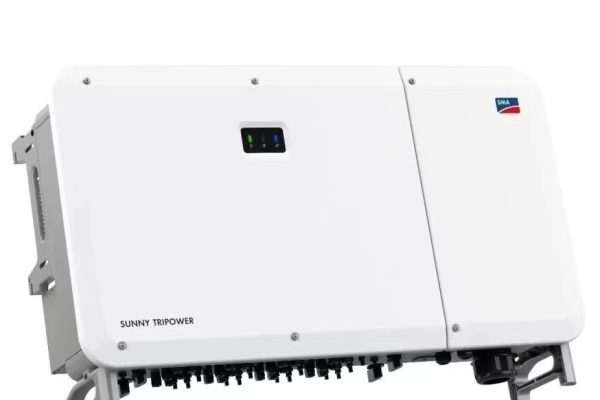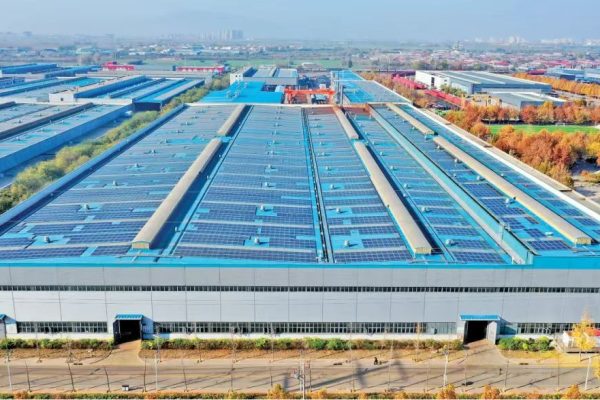As energy storage systems (ESS) become integral to industrial operations, predictive maintenance powered by AI is redefining how reliability is achieved. Traditional maintenance models — scheduled inspections or reactive repairs — are no longer sufficient for systems expected to run 24/7 with minimal downtime.
By combining real-time data monitoring, machine learning algorithms, and pattern recognition, AI-enhanced predictive maintenance enables operators to anticipate failures before they happen, optimize maintenance cycles, and extend system lifespan — all while reducing operational costs.
This article explores the technical framework, implementation examples, and engineering insights for integrating AI-based monitoring into modular and industrial-scale ESS.
1. From Preventive to Predictive: Why AI Matters
Conventional preventive maintenance schedules often rely on estimated lifetimes or time intervals — an approach that can either waste resources on premature servicing or miss early fault signs.
AI introduces a data-driven approach, continuously learning from system behavior to detect subtle anomalies that precede faults.
Key Benefits:
- Early Fault Detection: Identifies degradation trends long before alarms trigger.
- Maintenance Optimization: Recommends interventions based on real condition, not time.
- Reduced Downtime: Enables proactive part replacement and repair planning.
- Extended Battery Lifespan: Maintains optimal charge/discharge behavior through smart control.
In short, AI transforms maintenance from reactive firefighting into strategic reliability management.
2. Core Architecture of AI-Driven Monitoring Systems
A typical AI monitoring framework for energy storage consists of four layers:
a) Data Acquisition Layer
Sensors embedded at cell, module, and system levels collect continuous data streams:
- Voltage, current, temperature
- Internal resistance
- SOC (State of Charge) / SOH (State of Health)
- Cooling system performance
- Inverter and BMS status
High-resolution data sampling (1–10 Hz) provides the foundation for accurate pattern recognition.
b) Data Processing Layer
Pre-processing includes:
- Noise filtering and normalization
- Feature extraction (e.g., temperature gradients, charge/discharge asymmetry)
- Time-series segmentation
c) AI Analytics Layer
Machine learning algorithms — often a hybrid of supervised (trained on known fault data) and unsupervised (detecting new anomalies) models — analyze deviations from normal behavior.
Commonly used methods include:
- Random Forest / Gradient Boosting for classification
- LSTM (Long Short-Term Memory) networks for time-series prediction
- Autoencoders for anomaly detection
- Bayesian models for uncertainty estimation
d) Decision and Control Layer
Once anomalies are detected, the system executes predefined responses:
- Issue predictive maintenance alerts
- Trigger module-level isolation or derating
- Recommend inspection schedules or part replacements
3. Key Predictive Maintenance Use Cases
a) Cell and Module Degradation Forecasting
AI tracks gradual SOH decline by comparing real-time charge/discharge curves to baseline patterns.
Example:
In a 1 MWh industrial ESS, the AI model predicted cell imbalance three weeks before conventional alarms would have been triggered. Early intervention reduced capacity loss by 12% over the next six months.
b) Thermal Runaway Prevention
By analyzing heat generation patterns and identifying thermal inconsistencies, AI can warn of potential runaway conditions.
Implementation:
A liquid-cooled ESS integrated an AI-based thermal map analyzer that learned from 1,000+ hours of operation. It detected airflow blockage in one module’s cooling loop — preventing overheating and potential shutdown.
c) Power Electronics Fault Prediction
Inverters and DC/DC converters often degrade due to thermal cycling and component fatigue. AI models trained on vibration and current harmonics can forecast inverter failures.
Case:
A telecom energy system’s predictive module identified abnormal inverter current ripple 10 days before a MOSFET fault, allowing hot-swap replacement without downtime.
d) BMS and Communication Fault Diagnosis
AI-driven correlation mapping identifies patterns of communication delays or BMS signal inconsistencies, reducing troubleshooting time by up to 70%.
4. Integration with BMS and EMS
AI-based monitoring systems don’t replace existing BMS or EMS — they augment them.
Integration Pathway:
- BMS: Provides raw electrical and thermal data.
- AI Layer: Analyzes trends, detects anomalies, and predicts failures.
- EMS: Executes power management decisions based on AI recommendations.
Example Integration:
In a modular 500 kWh system, AI-enhanced EMS dynamically derated charging power when detecting early signs of over-temperature trend, preventing repeated high-load stress and extending cooling system life.
5. Data Infrastructure and Cloud Architecture
For scalable ESS monitoring, AI algorithms often run in edge–cloud hybrid architecture:
- Edge AI (on-site controller): Handles real-time fault detection and immediate control actions.
- Cloud AI: Performs long-term analytics, model retraining, and fleet-level optimization.
Advantages of Hybrid Setup:
- Lower latency for safety-critical actions.
- Scalable analytics across multiple deployments.
- Centralized updates and continuous model improvement.
Security Considerations:
- Encrypted data transmission (TLS/SSL).
- Role-based access control (RBAC).
- Secure firmware and OTA update management.
6. Real-World Case Study: Predictive Maintenance in a Factory ESS
System Overview:
- 1.2 MWh industrial microgrid with 20 × 60 kWh modules
- Liquid cooling, LFP chemistry
- AI predictive monitoring integrated with EMS
Implementation Steps:
- Historical data (6 months) used to train initial model.
- Cloud-based LSTM network deployed for SOH prediction.
- Local edge controller executed anomaly detection at 1 Hz.
- Automatic alerts generated for deviations beyond defined confidence intervals.
Results:
- Failure detection time: Reduced by 80%.
- Maintenance cost savings: 25% within first year.
- System uptime: 99.7%.
- Identified early cooling pump degradation before mechanical failure occurred.
Lesson Learned:
Combining AI analytics with localized response control yields the most effective predictive maintenance — balancing precision with reaction speed.
7. Challenges and Engineering Considerations
a) Data Quality and Sensor Accuracy
AI performance depends on reliable data. Poor calibration or inconsistent sampling introduces bias.
Solution:
Implement redundant sensors and sensor drift correction algorithms within the AI layer.
b) Model Adaptation to New Environments
Models trained on one system may not perform well in another with different hardware or climate.
Solution:
Use transfer learning — adapting existing AI models with smaller new datasets.
c) Human Oversight
AI must remain assistive, not autonomous. Operators should verify predictions and adjust maintenance strategies accordingly.
8. Future Outlook: Toward Self-Healing Energy Systems
Next-generation AI will move beyond prediction to self-healing ESS, capable of:
- Reconfiguring module operation around degraded cells.
- Dynamically balancing energy flows to minimize wear.
- Coordinating across multiple systems for grid-level optimization.
Emerging trends include:
- Digital twins of ESS for real-time simulation and optimization.
- Federated learning for fleet-level AI training without centralizing sensitive data.
- Integration with blockchain for traceable maintenance records and reliability certification.
9. Key Takeaways for EPCs and Integrators
- AI adds measurable value by reducing maintenance costs and downtime.
- Start small, scale fast: Begin with data-rich pilot sites before full deployment.
- Combine edge and cloud intelligence for optimal balance between speed and insight.
- Keep human validation in the loop to prevent false positives and improve trust.
- Long-term ROI: Systems with predictive maintenance show up to 40% lower OPEX after two years.
AI-enhanced monitoring and predictive maintenance mark a major step forward in making energy storage systems more intelligent, reliable, and cost-efficient. By leveraging advanced analytics and machine learning, operators can transform maintenance from reactive to proactive — detecting issues before they escalate, optimizing resource use, and ensuring consistent uptime.
As industrial and commercial ESS deployments scale, those integrating AI early will not only lower costs but also build a competitive advantage based on proven reliability and operational intelligence.









